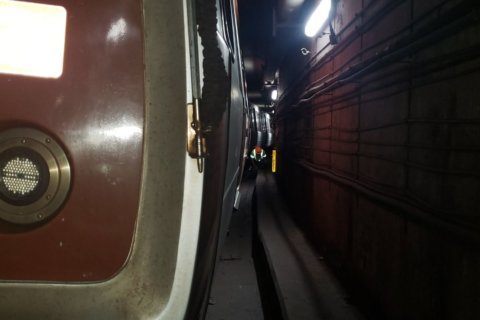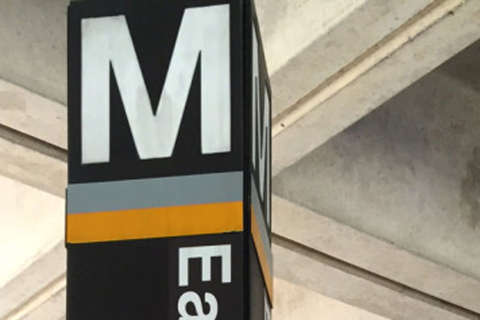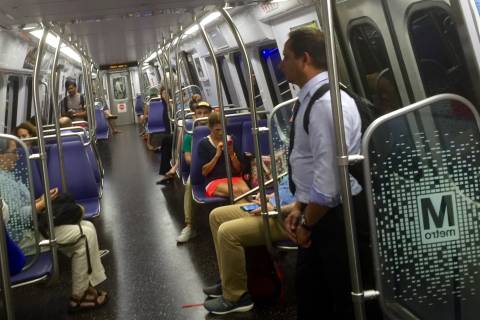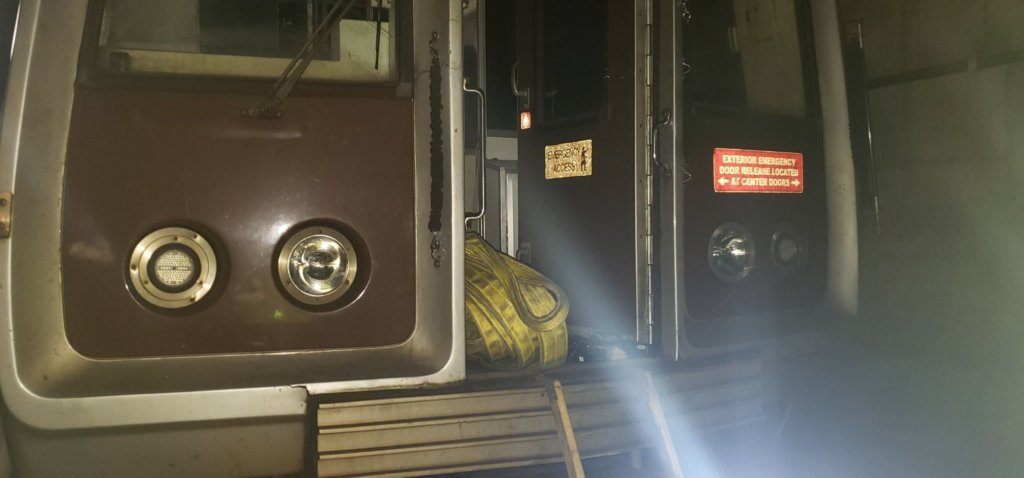
A Metro train operator involved in a crash last month may have been distracted by a cellphone, and he likely moved his train without proper permission, new findings from the Washington Metrorail Safety Commission suggest.
Though the details issued Monday do not state the cause of the Oct. 7 crash, the two findings tied to the crash again direct Metro to come up with better plans to prevent operators from moving trains without permission, and direct Metro to take even greater steps to prevent cellphone use by train operators.
Washington Metrorail Safety Commission CEO David Mayer did confirm that the train operator did not have permission from rail controllers to move the train forward while the train was showing a maximum allowed speed of zero on Oct. 7.
It is unclear — and may remain uncertain — whether the train operator was actually using his cellphone or another personal electronic device, in part because the cellphone records are not available as part of the investigation, Mayer said Monday.
MORE METRO NEWS
- Metro aims for September Silver Line opening despite construction issues
- Union warns privatization fight could disrupt more bus commutes in Northern Va.
- Metro pulls naming rights plan after Fairfax County complaints
“Regardless of whether the use of [personal electronic devices] played a role in the Oct. 7 collision, investigative activities so far reveal opportunities for Metrorail to strengthen its efforts to prevent unauthorized use of [personal electronic devices],” the commission’s findings said.
Metro already has a zero-tolerance policy for the use of cellphones in train cabs, but the commission said Metro must do more.
Additional steps could highlight the dangers of distracted operations, additional checks in-person and using in-train video to be sure that phones are not being used, and new requirements that workers turn over cellphones as part of investigations.
Separate changes would be required to ensure in-cab video is useful, since some train operators have used sun visors to block the cameras.
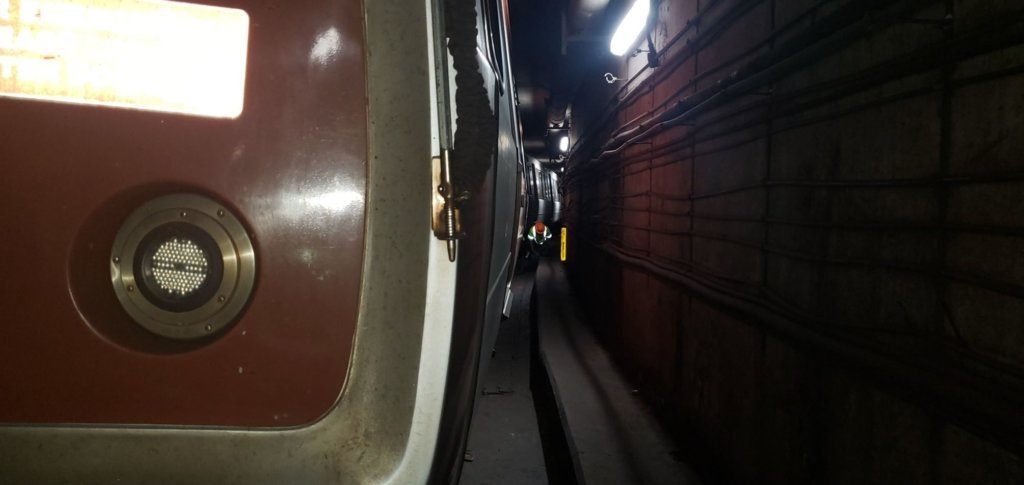
Not the first focus on the issue
The safety commission found that there are “several” places in the Metro system where the speed commands regularly drop to zero, though for no obvious reason, which could lead to complacency about following the rules in locations where the speed commands drop to zero for a good reason: to protect a train on the tracks ahead.
The commands are based on electrical signals indicating the locations of trains and some work zones. In the case of the Oct. 7 crash, the zero-speed command was correctly displayed since there was a train ahead, and that area is not one with known problems, Mayer said.
It is believed that many areas where the speed commands wrongly drop out are due to differences in the metal in the rails that break up circuits. The commission is unsure of exactly how many locations across the system have the issue regularly.
Metro must now identify all of those locations where the commands regularly drop out and come up with plans and schedules to fix the issues that should have been addressed through regular maintenance.
Metro also must better monitor compliance with rules and improve training to emphasize the importance of the rules, and ensure that both train operators and rail controllers understand the steps required before moving a train that faces an automated speed limit of zero.
Such permission to move can be granted to move the train up to 15 mph in certain circumstances, but only when a specific request is made to the Rail Operations Control Center.
The Federal Transit Administration made a similar finding in 2016 that Metro had not implemented sufficient protections against unauthorized train movement when there are “zero-speed commands.”
Metro had already been in the process of upgrading train software to emphasize to train operators when they need additional permission to move, but that software has already been ignored in two red signal violations in the last few weeks, Mayer said: one Oct. 20 at New Carrollton and another Nov. 17 at Largo Town Center.
That suggests additional work is needed, Mayer said.
Metro has rolled out the software update to all new 7000 Series trains, and is adding it to 6000 Series trains as promised after the 2016 FTA report. Metro has now promised to add the software changes to its oldest trains still in service by spring, the commission said.
“We’re pleased with the engineering modifications and the engineering changes; however, we’re also looking for operational improvements,” Mayer said.
Metro has 30 days to propose plans to address the issues.
“Metro will thoroughly review today’s findings and develop Corrective Action Plans while continuing our ongoing dialogue with WMSC to address the concerns,” Metro spokesman Ian Jannetta said in a statement.
Those corrective action plans can then take months or longer to implement, depending on the exact nature of the fixes.
Station overruns
A third finding issued Monday that is not directly related to the crash requires Metro to do more to prevent station overruns where trains either fail to stop at stations or stop beyond the end of the platform. Metro has reported 48 station overruns to the commission so far this year, compared to 34 Metro counted in all of 2018.
“Each overrun represents an instance in which a train was not being controlled as it should have been. Such an event could lead to a collision with a train or workers ahead on the track or it could lead to a speed exceedance or even passing a red signal, either of which could cause a collision or a derailment,” Mayer said.
On the station overruns, Metro must define the violation, set tighter rules on how fast trains approach stations, and implement labor-management review boards for each incident, Mayer said.
“Whether it’s going up or even going down, the actual number is too high,” Mayer said.
The commission and Metro plan to meet in the next few weeks to consider other possible ways to limit station overruns.
Metro will have 30 days after that meeting to submit its corrective action plans on that issue.

